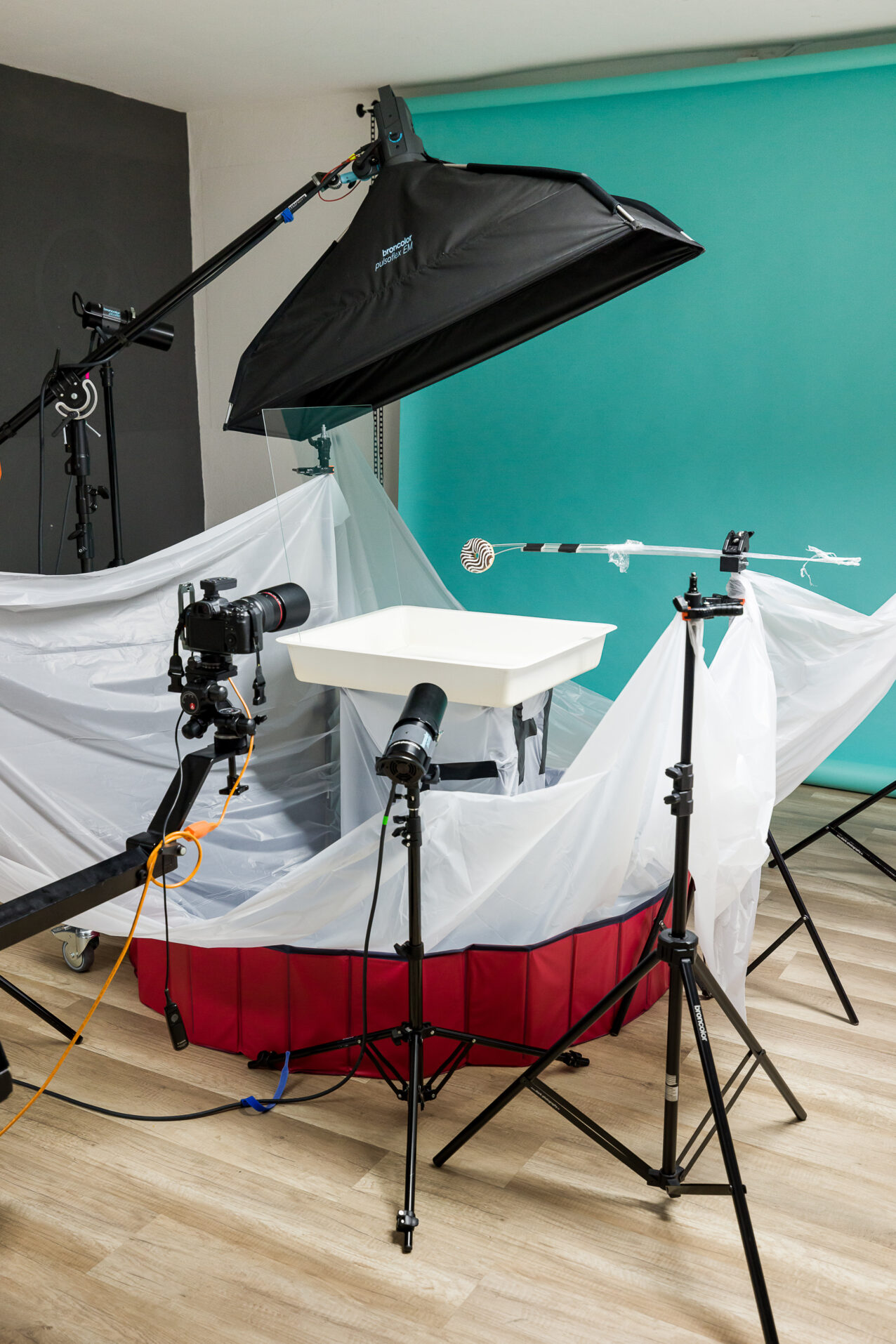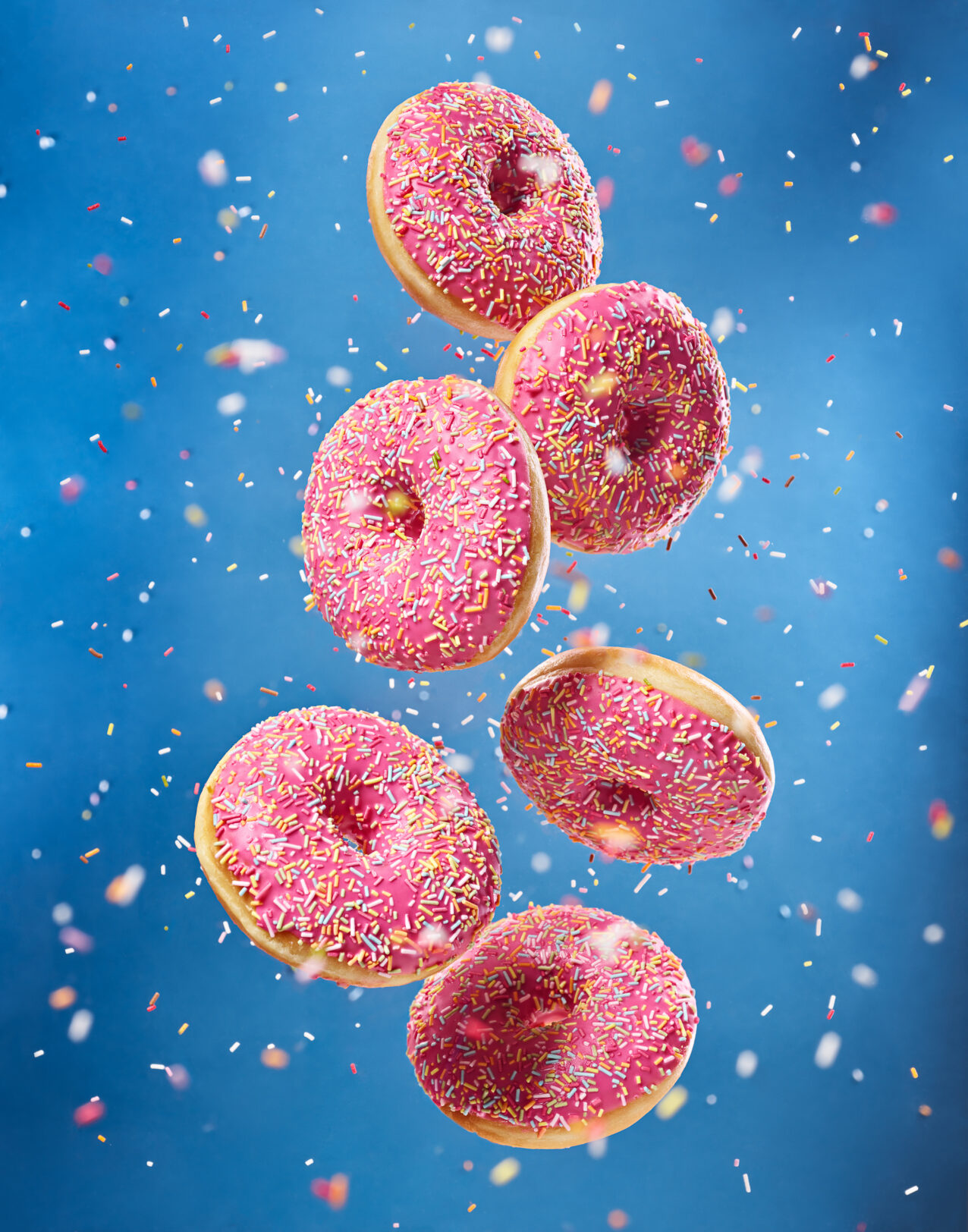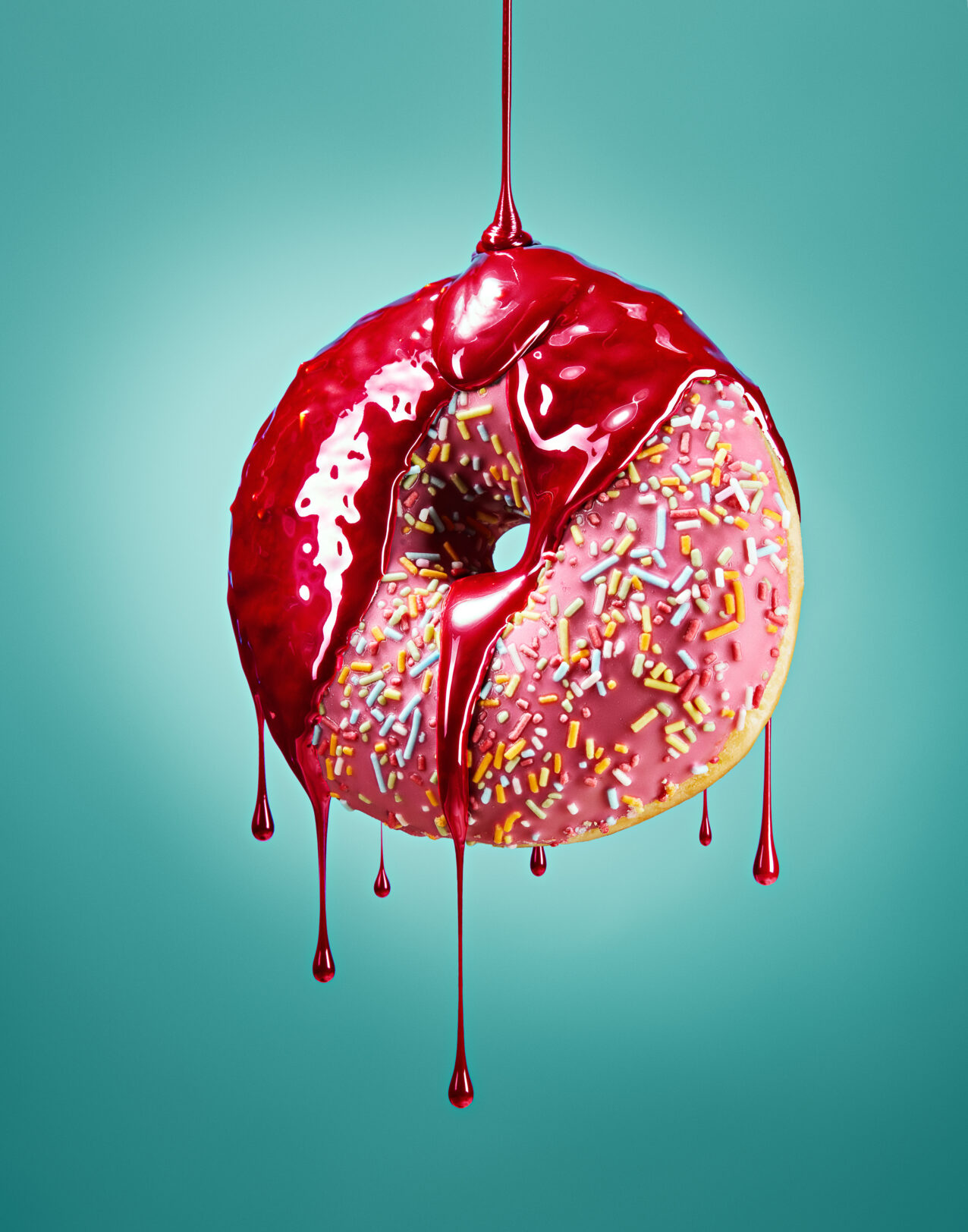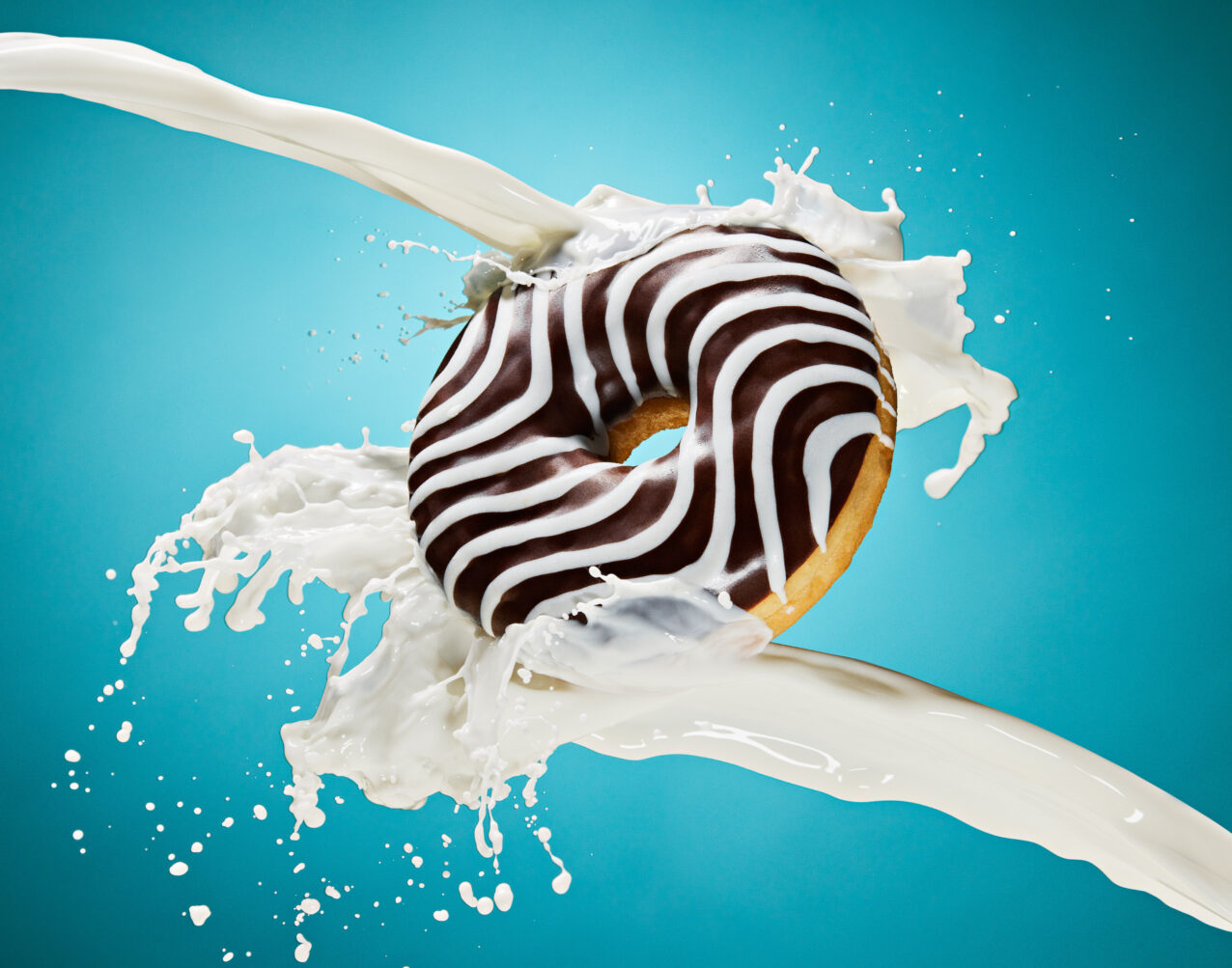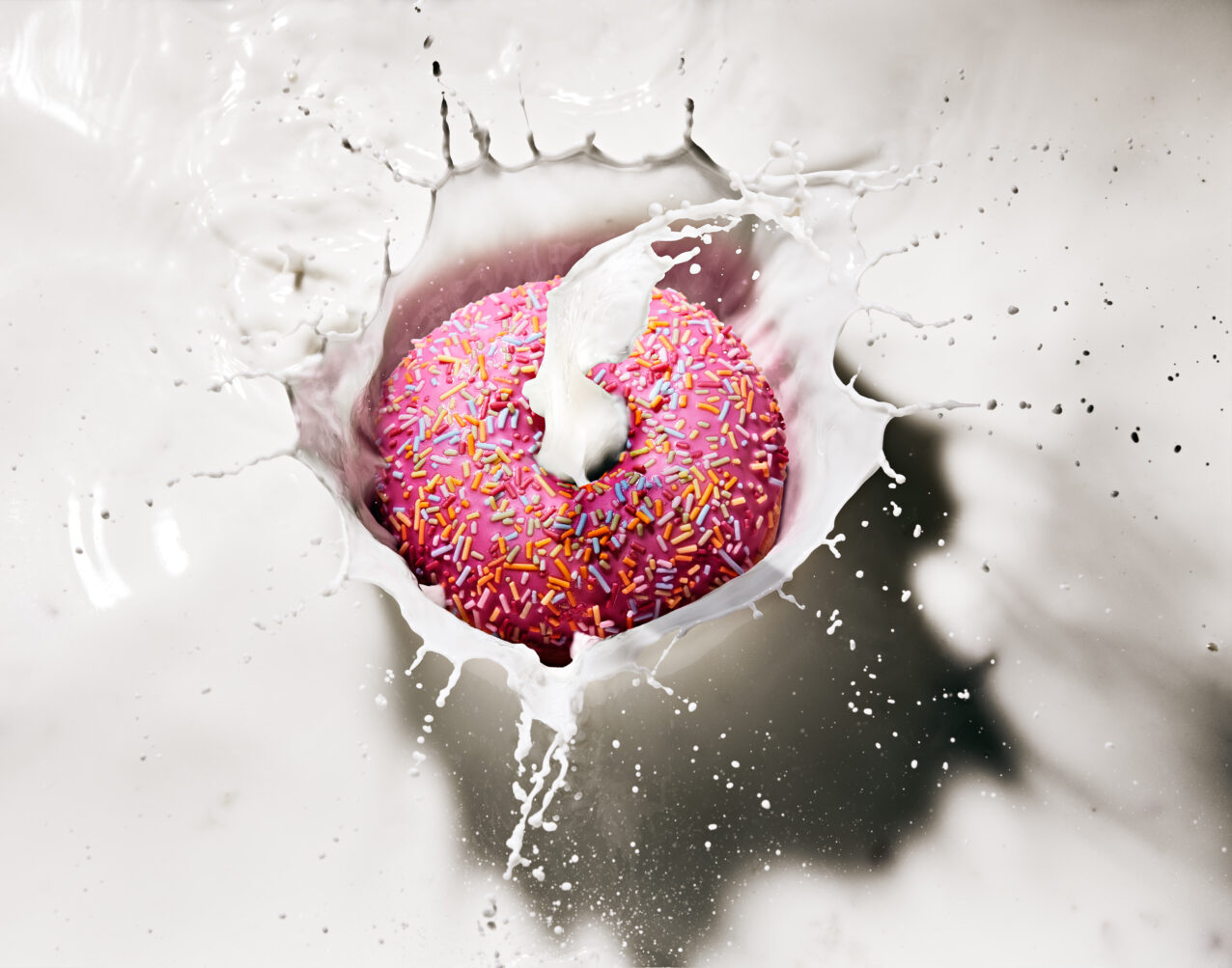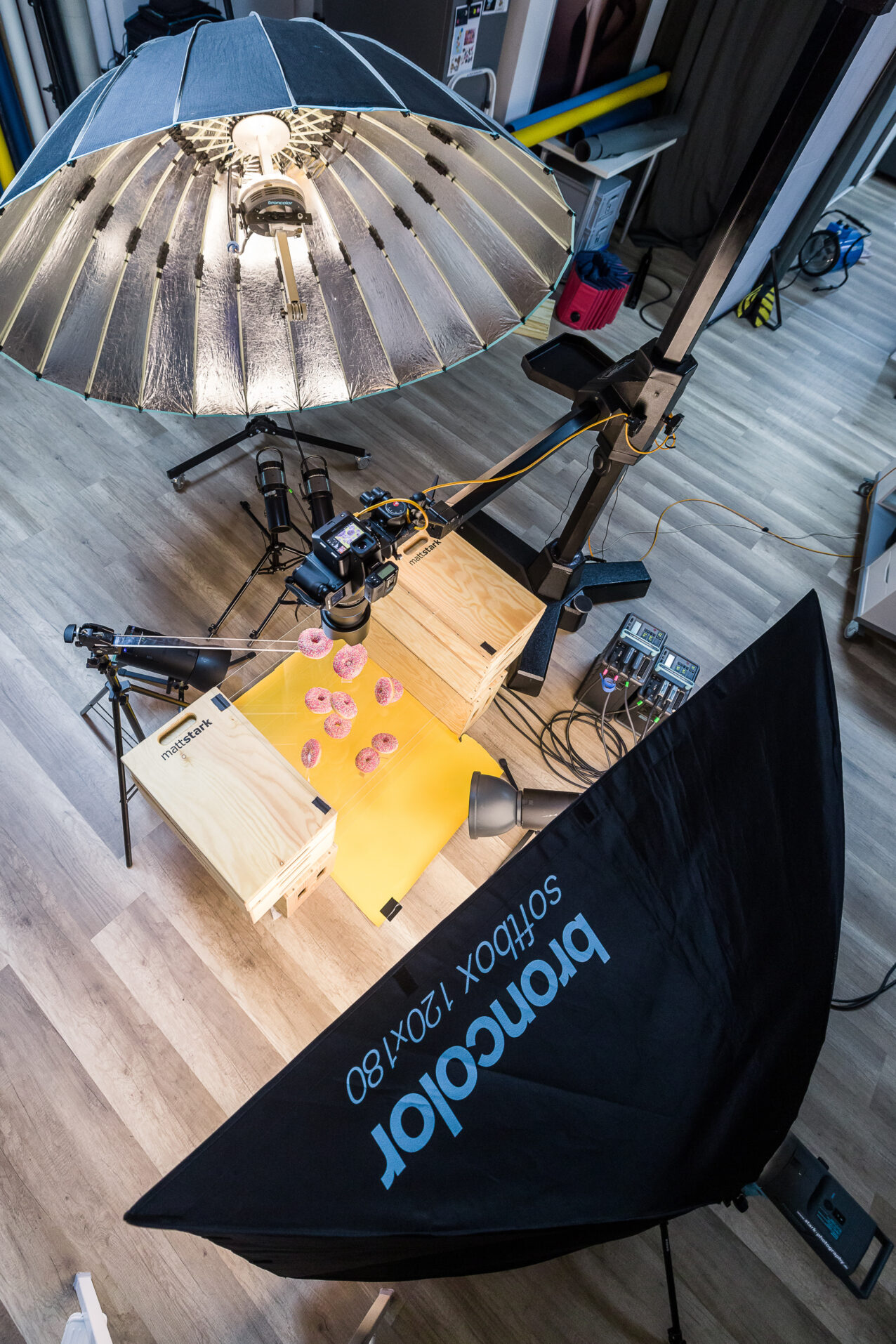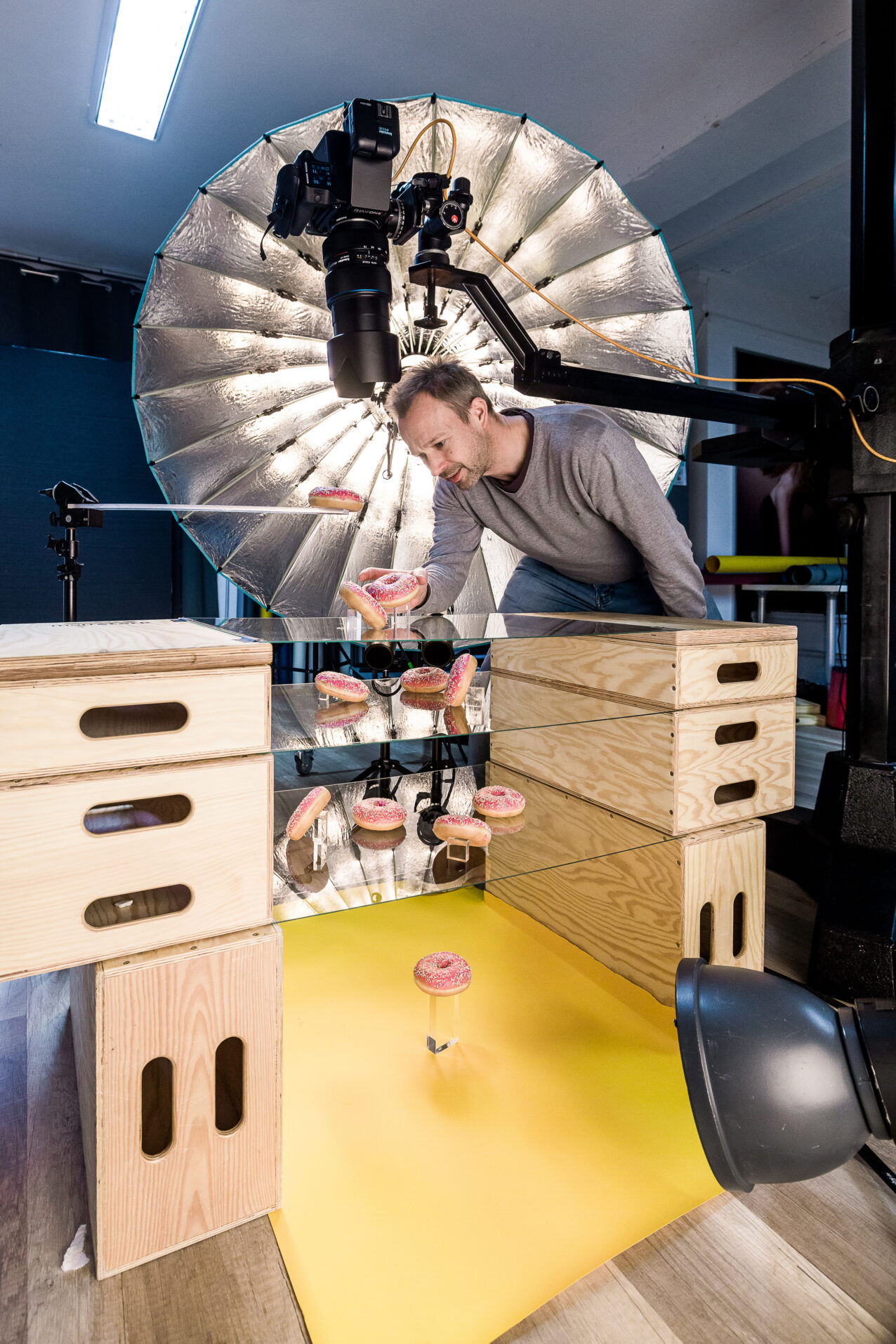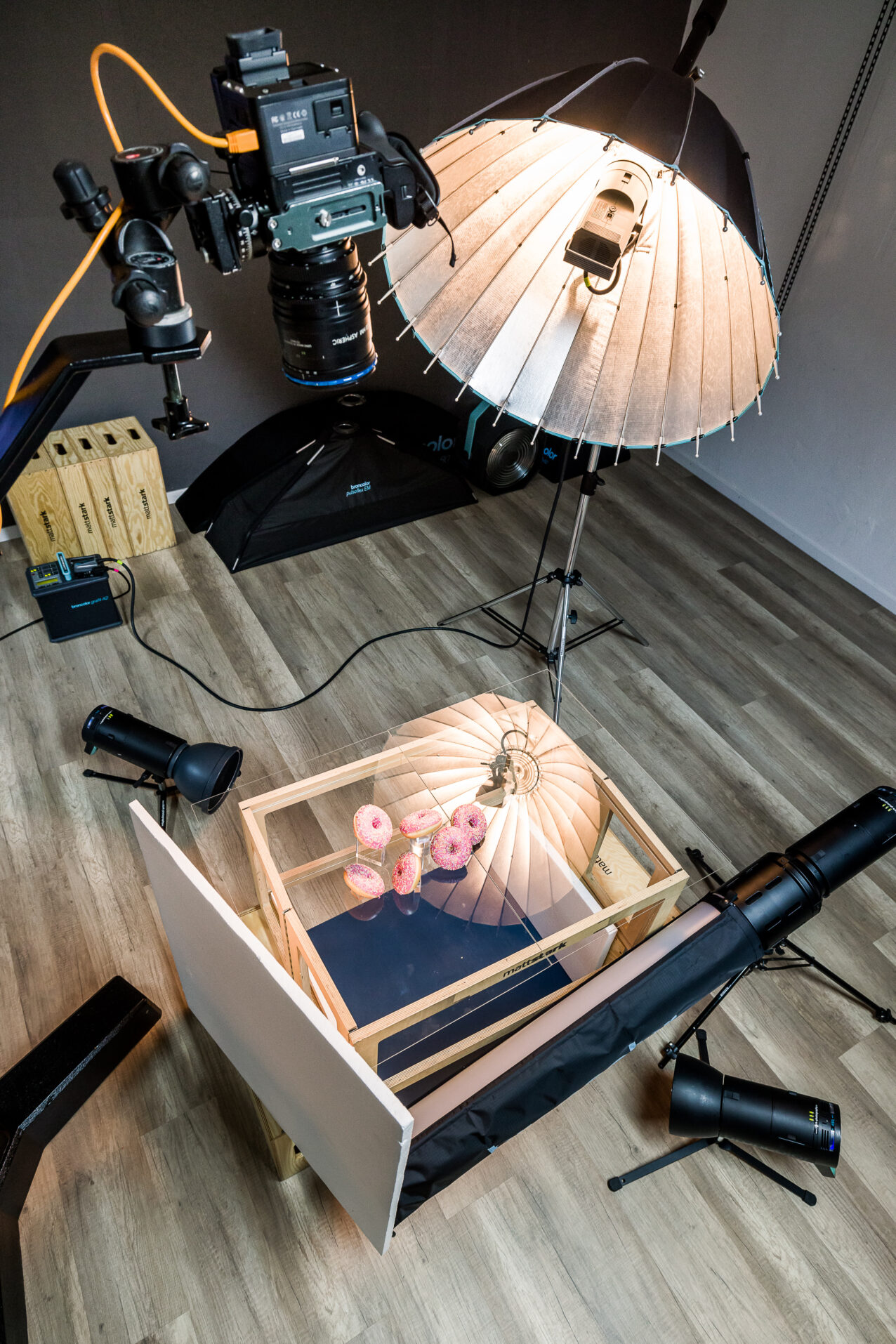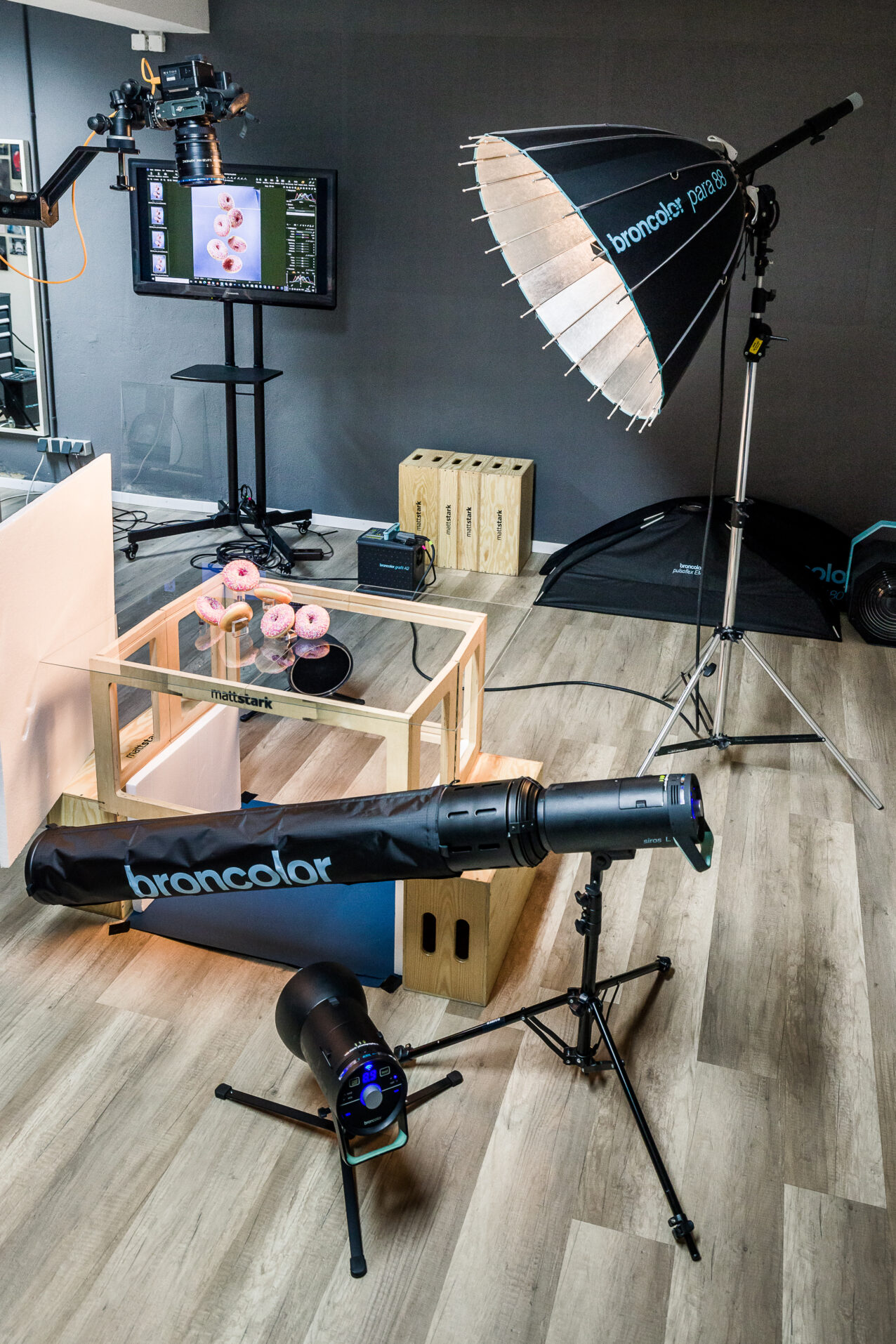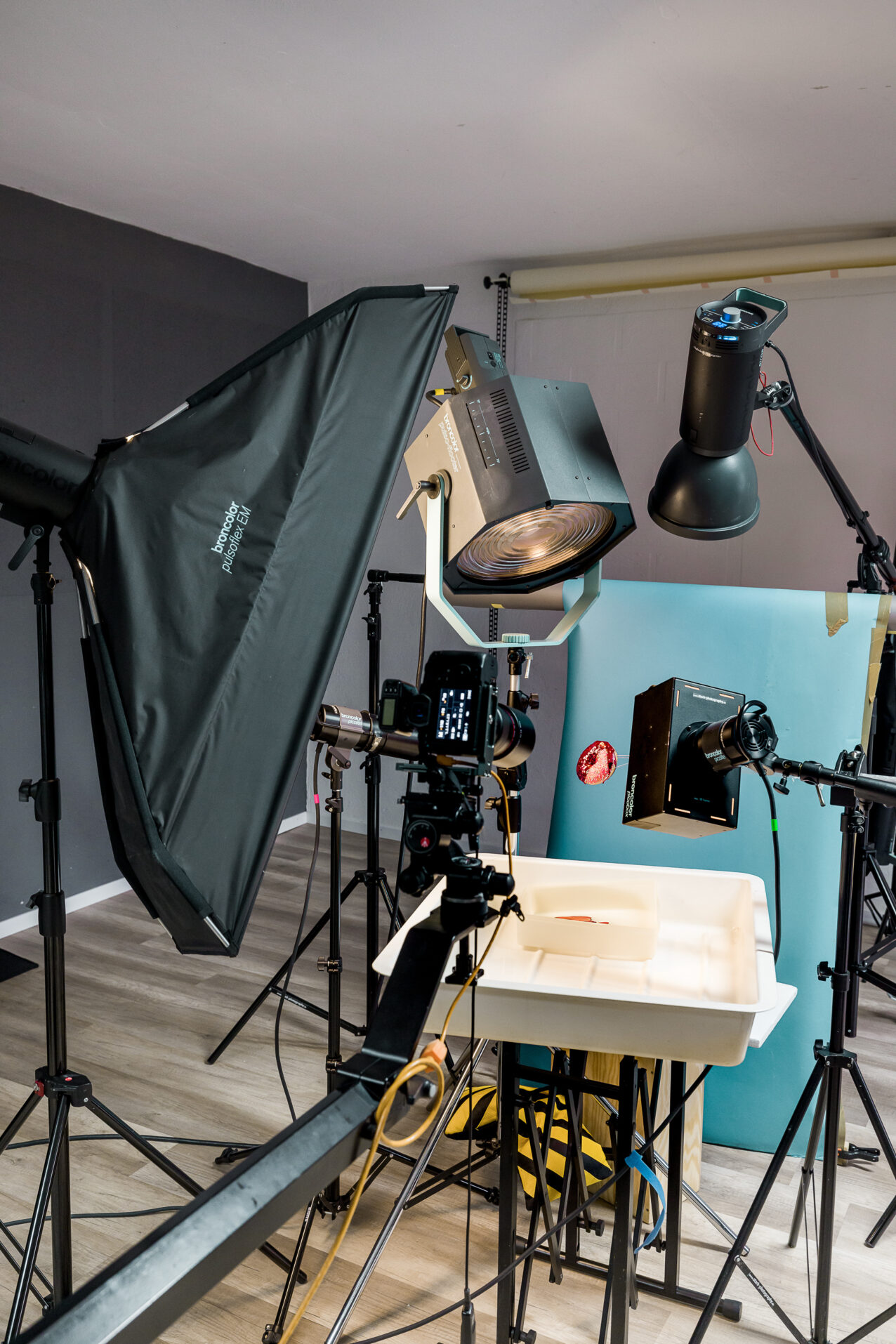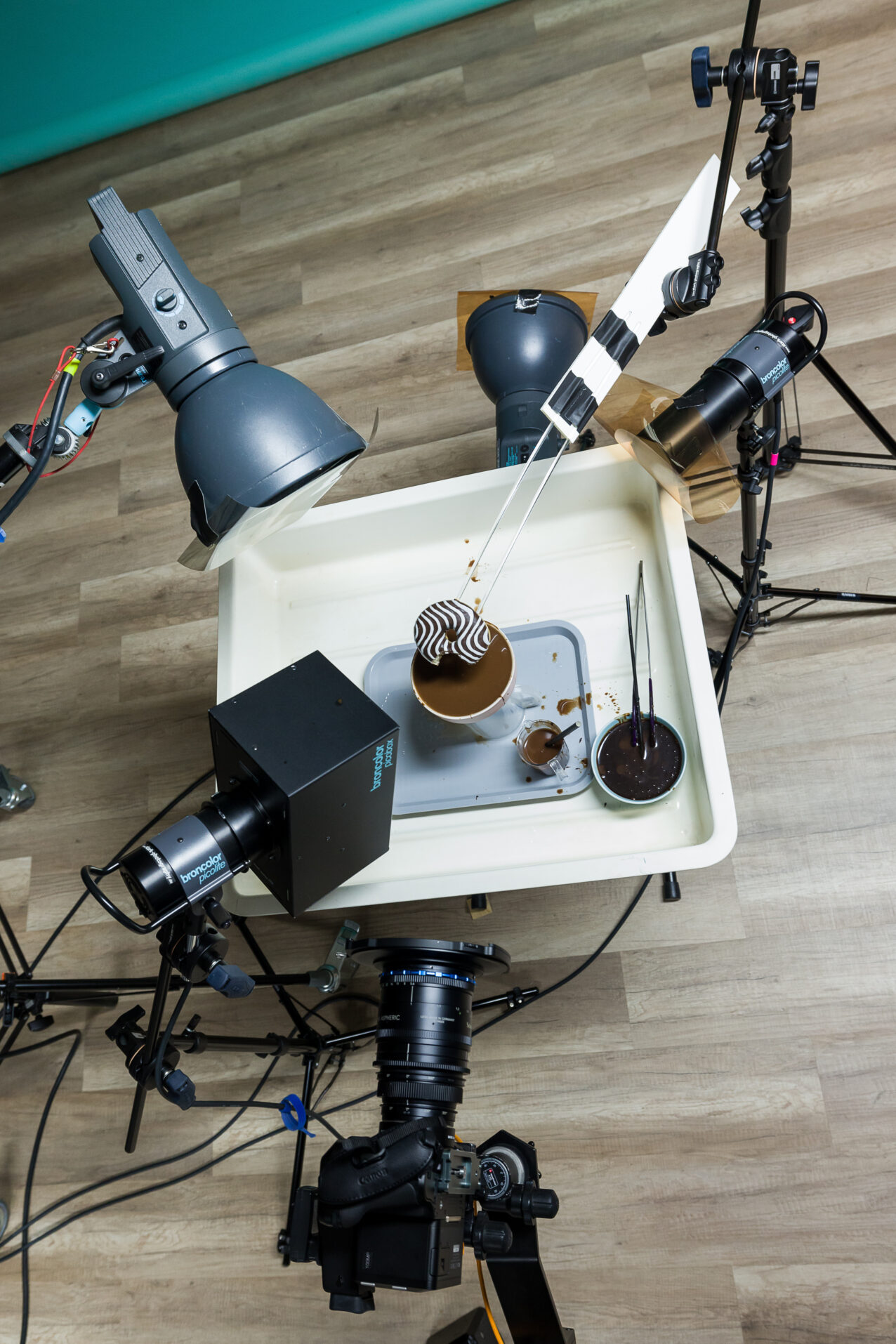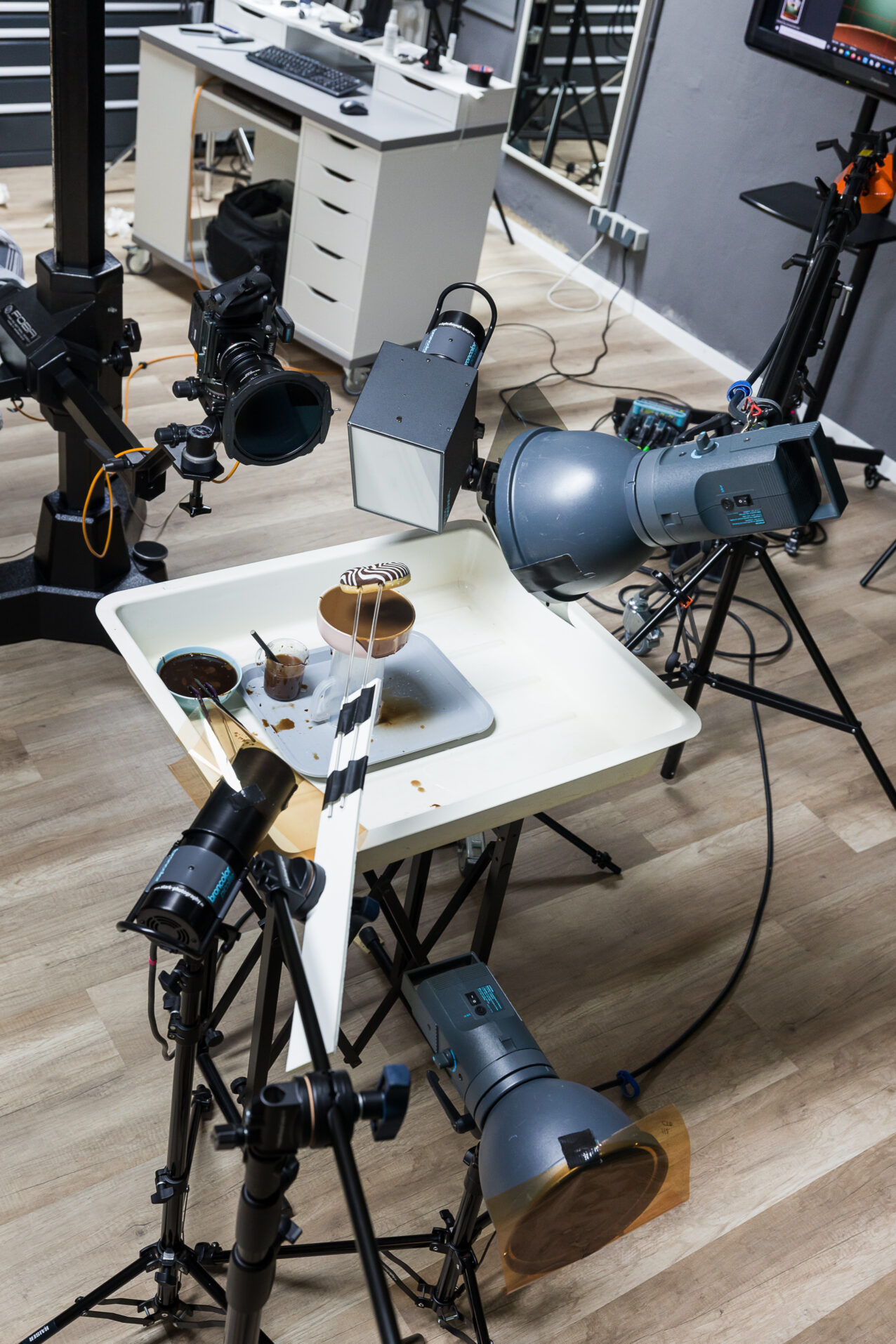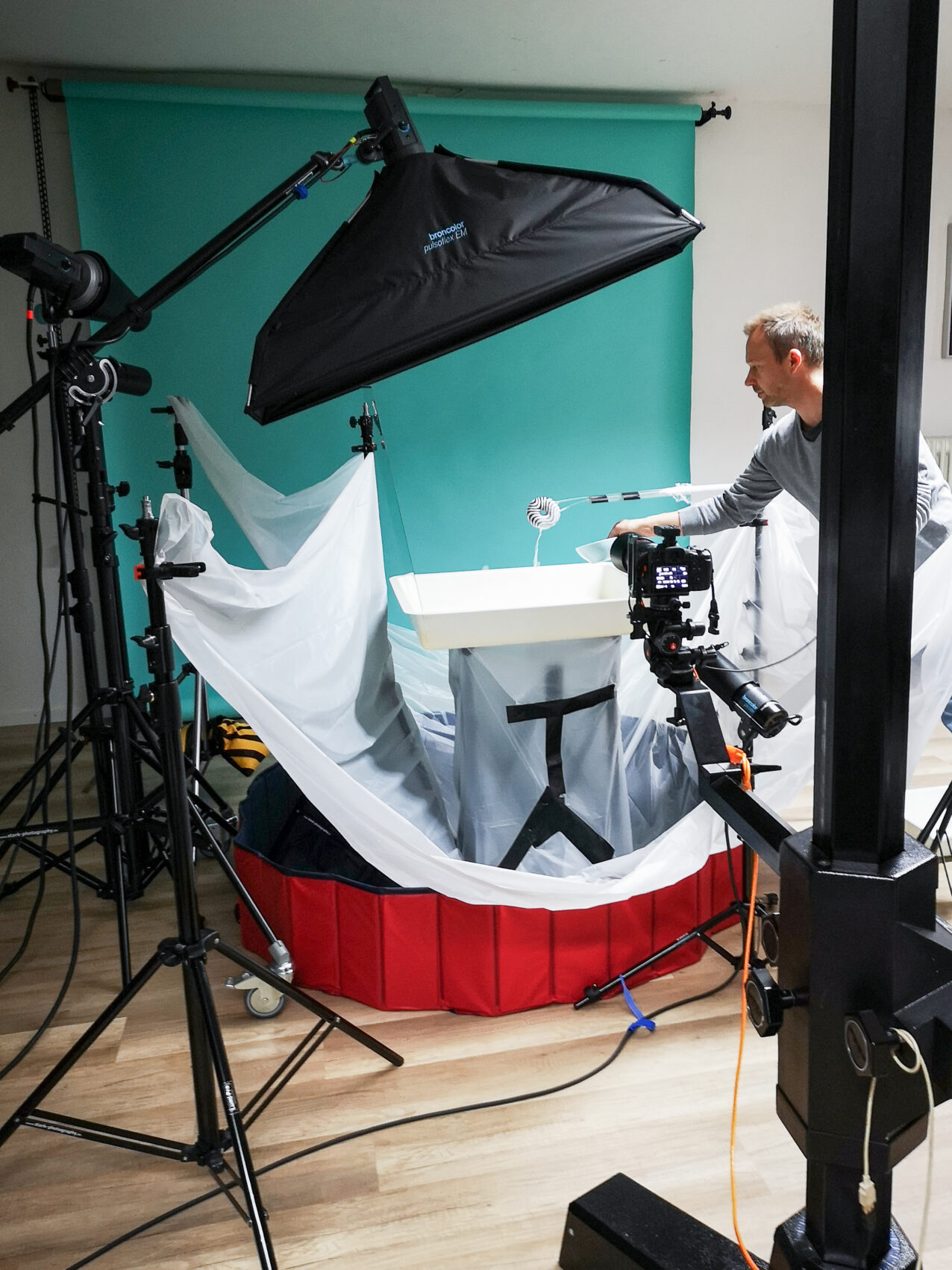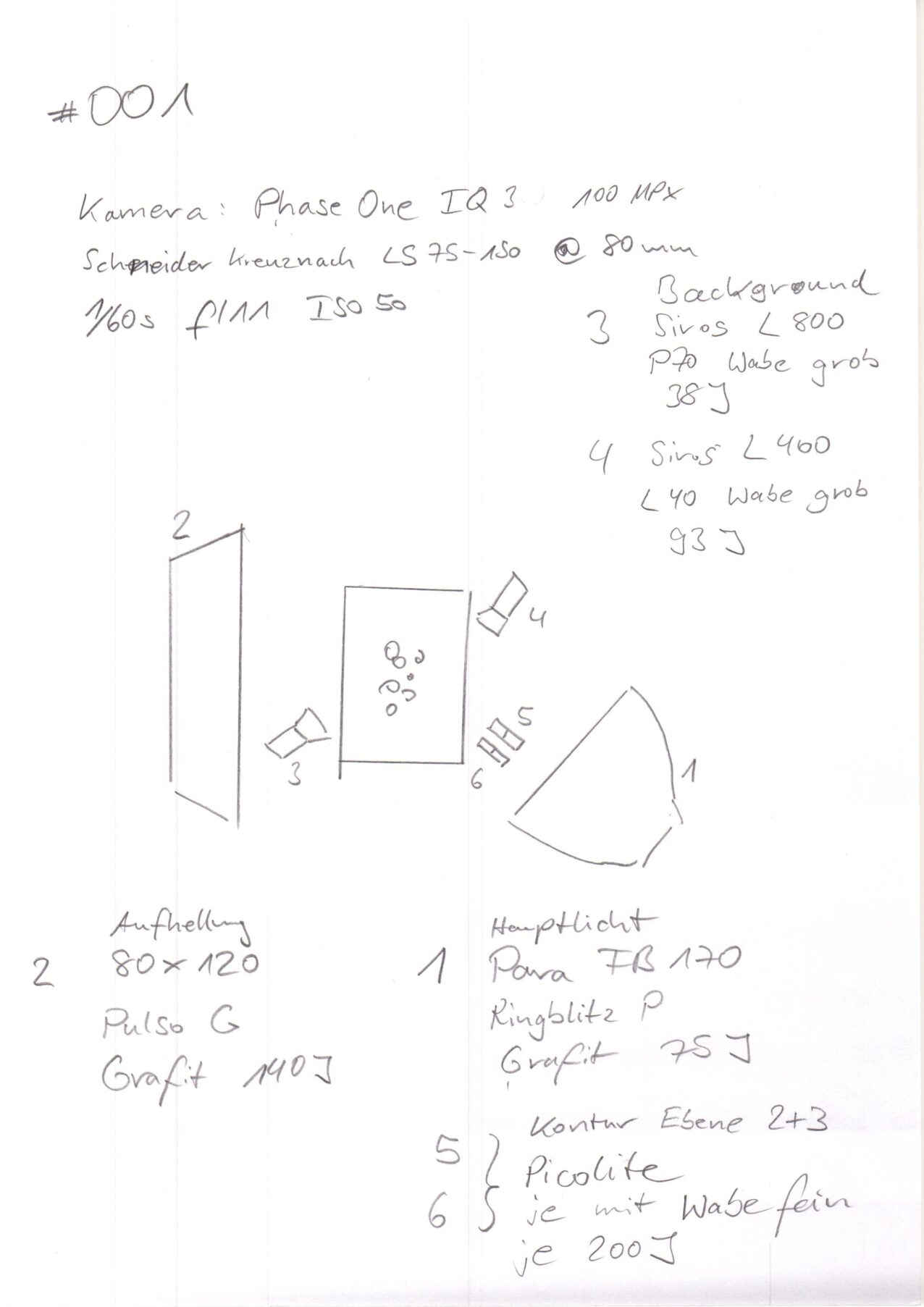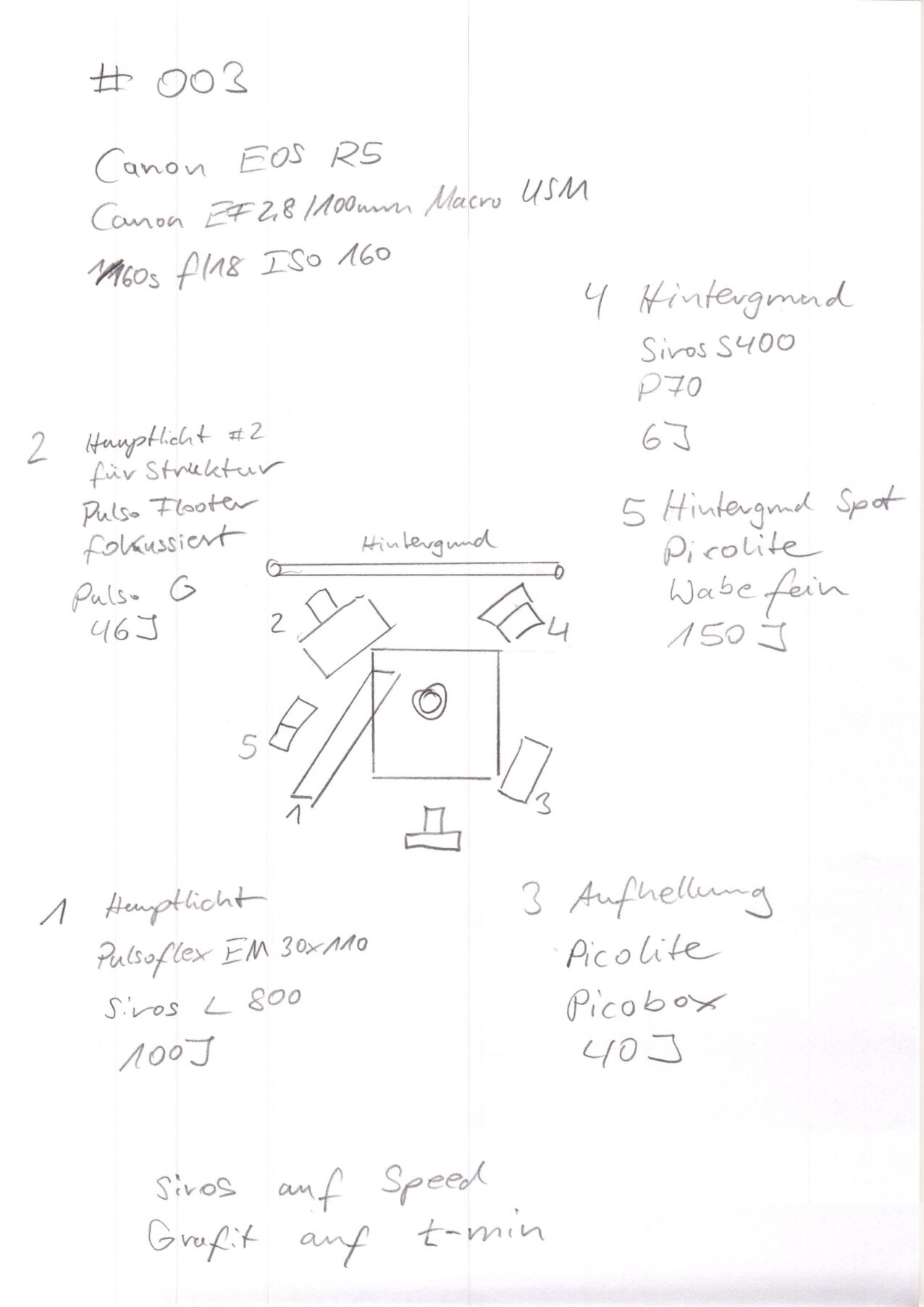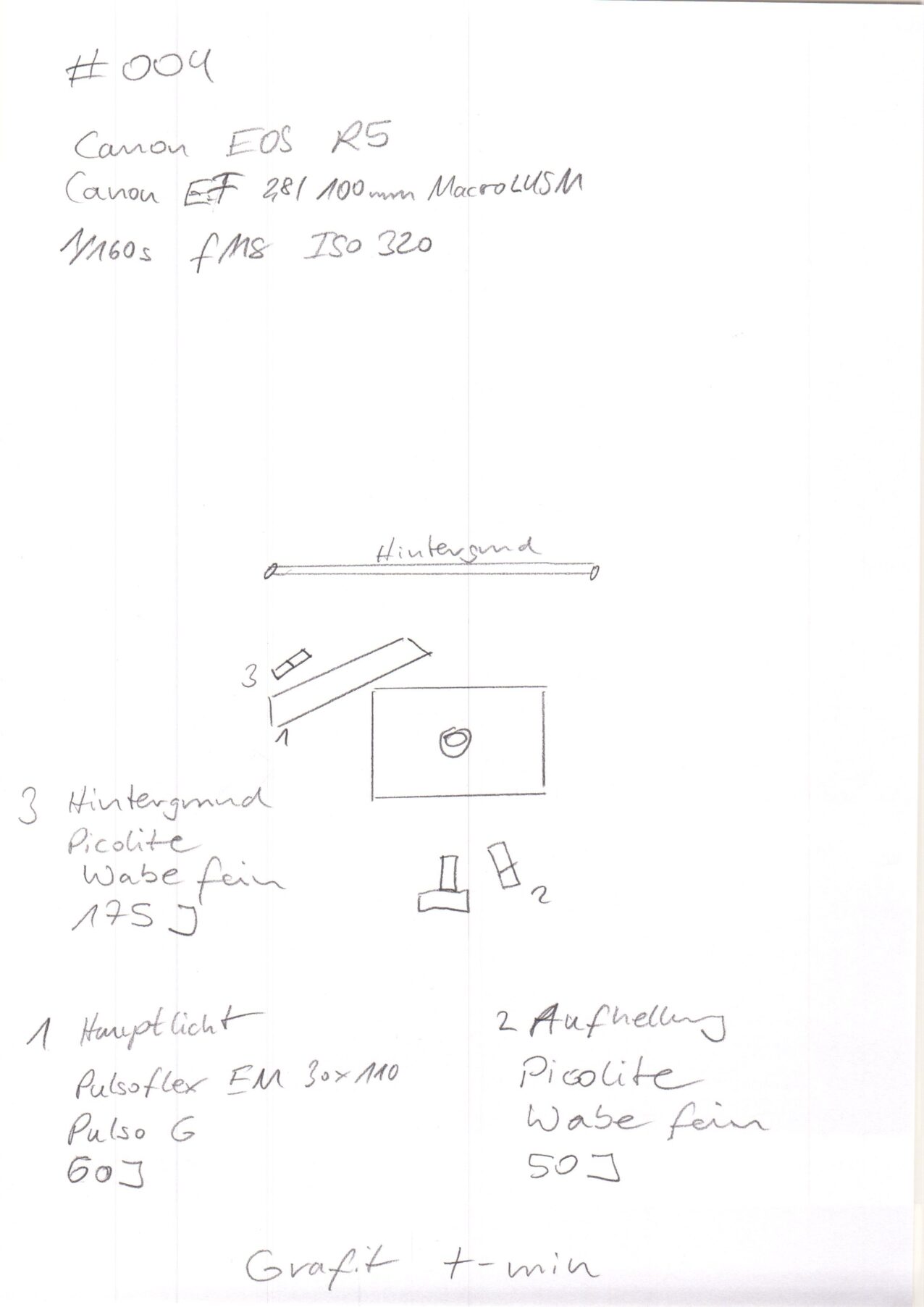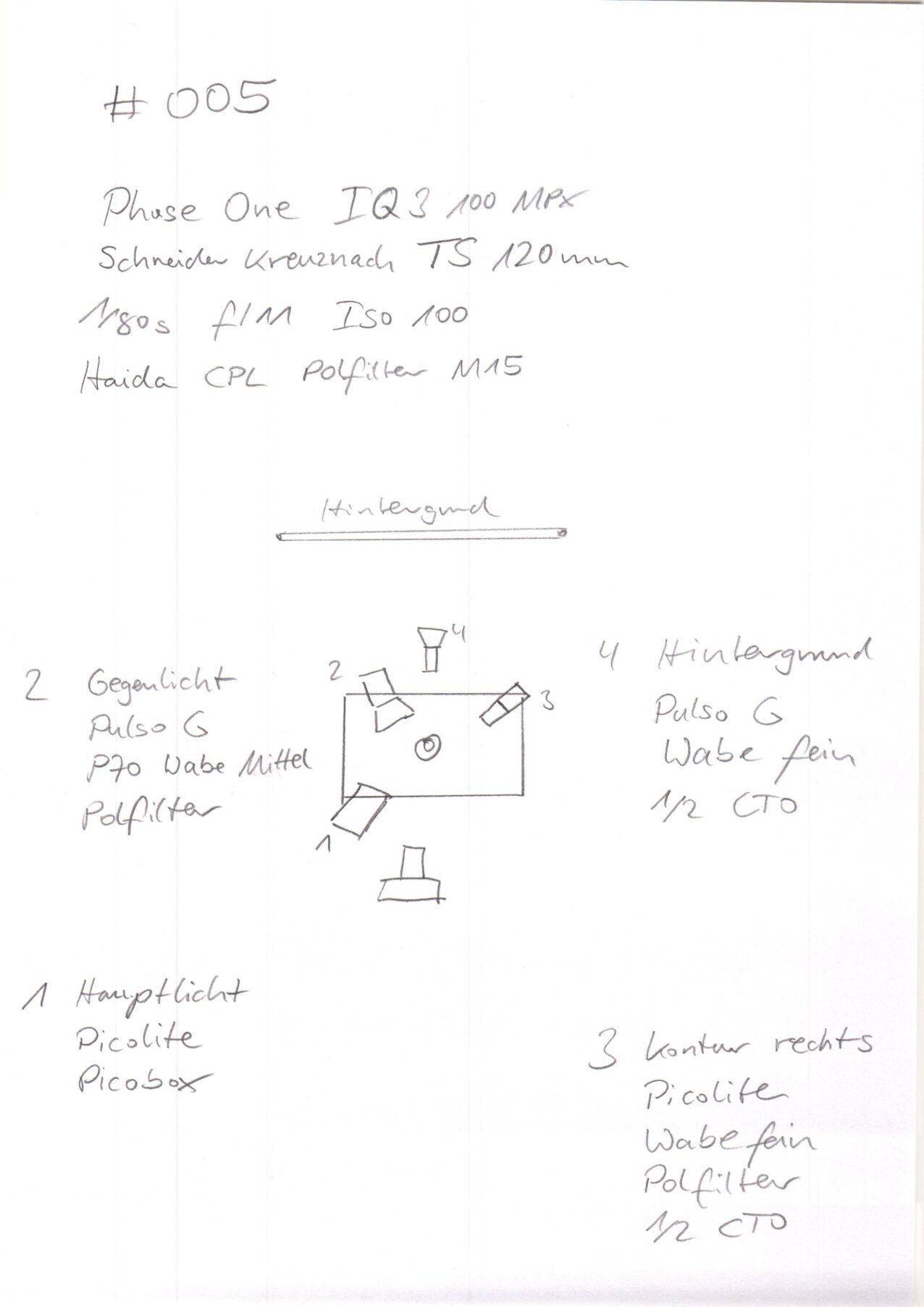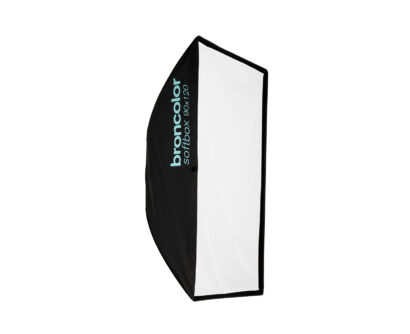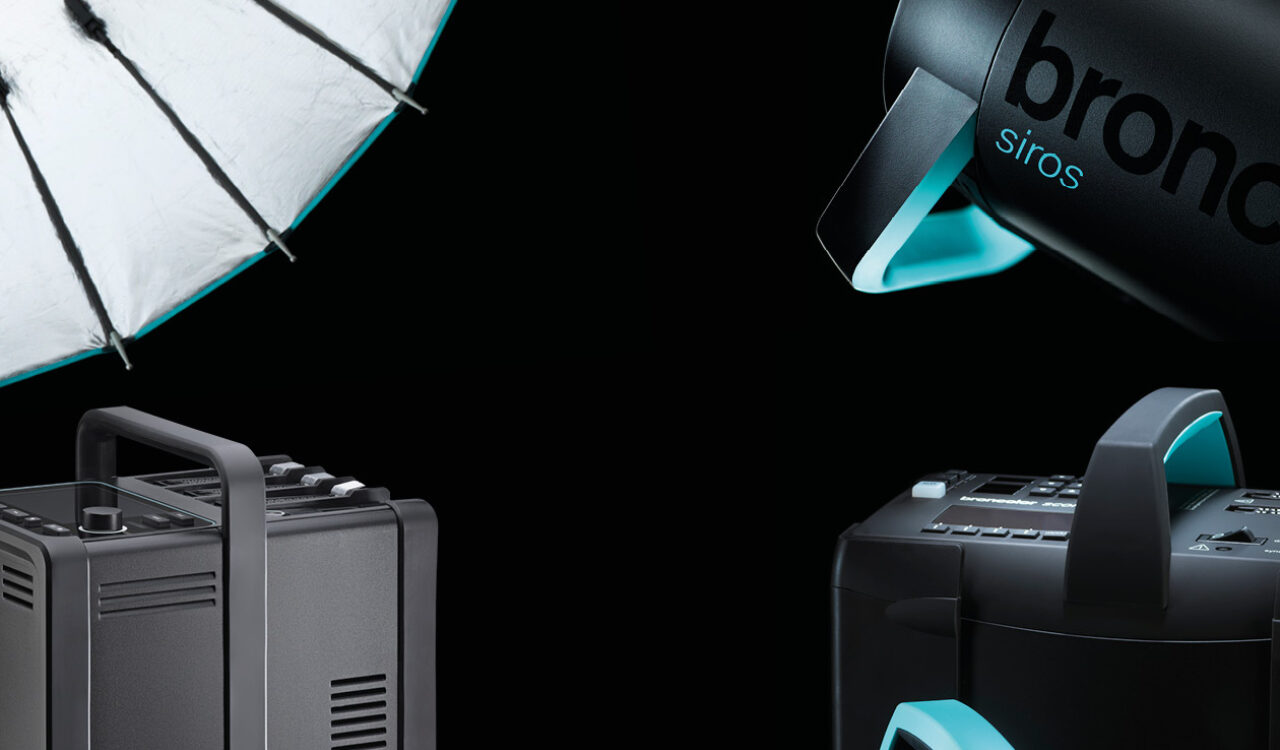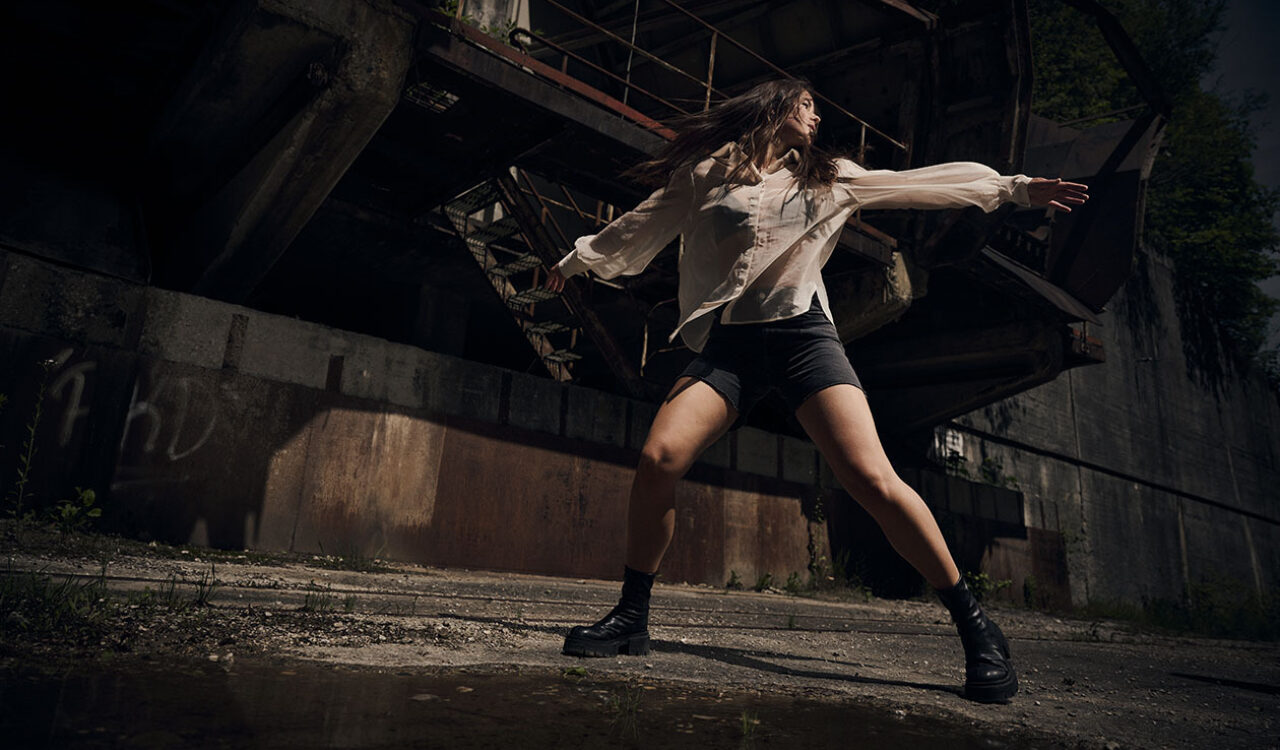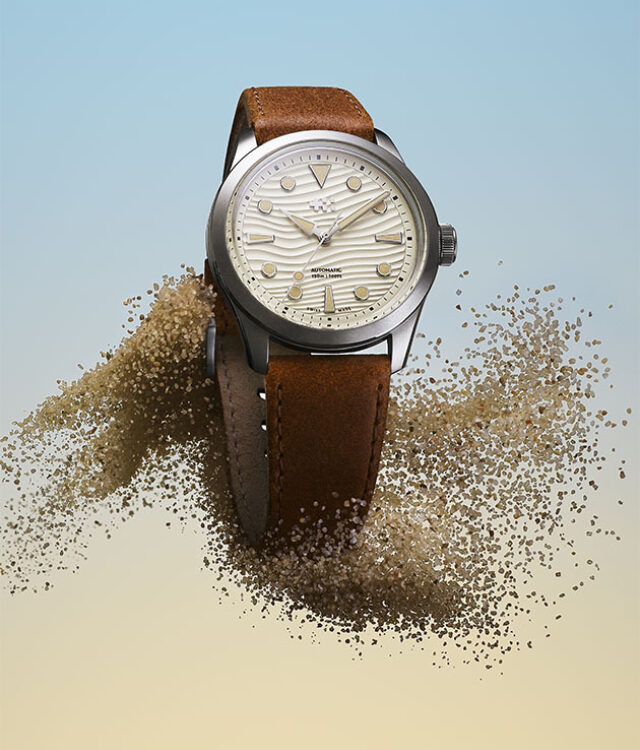To expand my portfolio and also to develop my own skills, free, creative projects are an integral part of my business. So it finally came to this series with the working title "Flying Donuts".
A donut shoot had been on my wish list for a long time, as I kept stumbling across inspiring images on social media. When I started planning the shoot, I already had a great pool of different image ideas that I wanted to implement.
During the shoot preparation I also did some research and had to realize that there are a lot of bad donut images out there. And especially a lot of pictures with splashes that were not properly assembled. This, of course, was an incentive for me to make it all better. I'm very detail oriented and can get stuck on small details for a long time until they meet my quality standard.
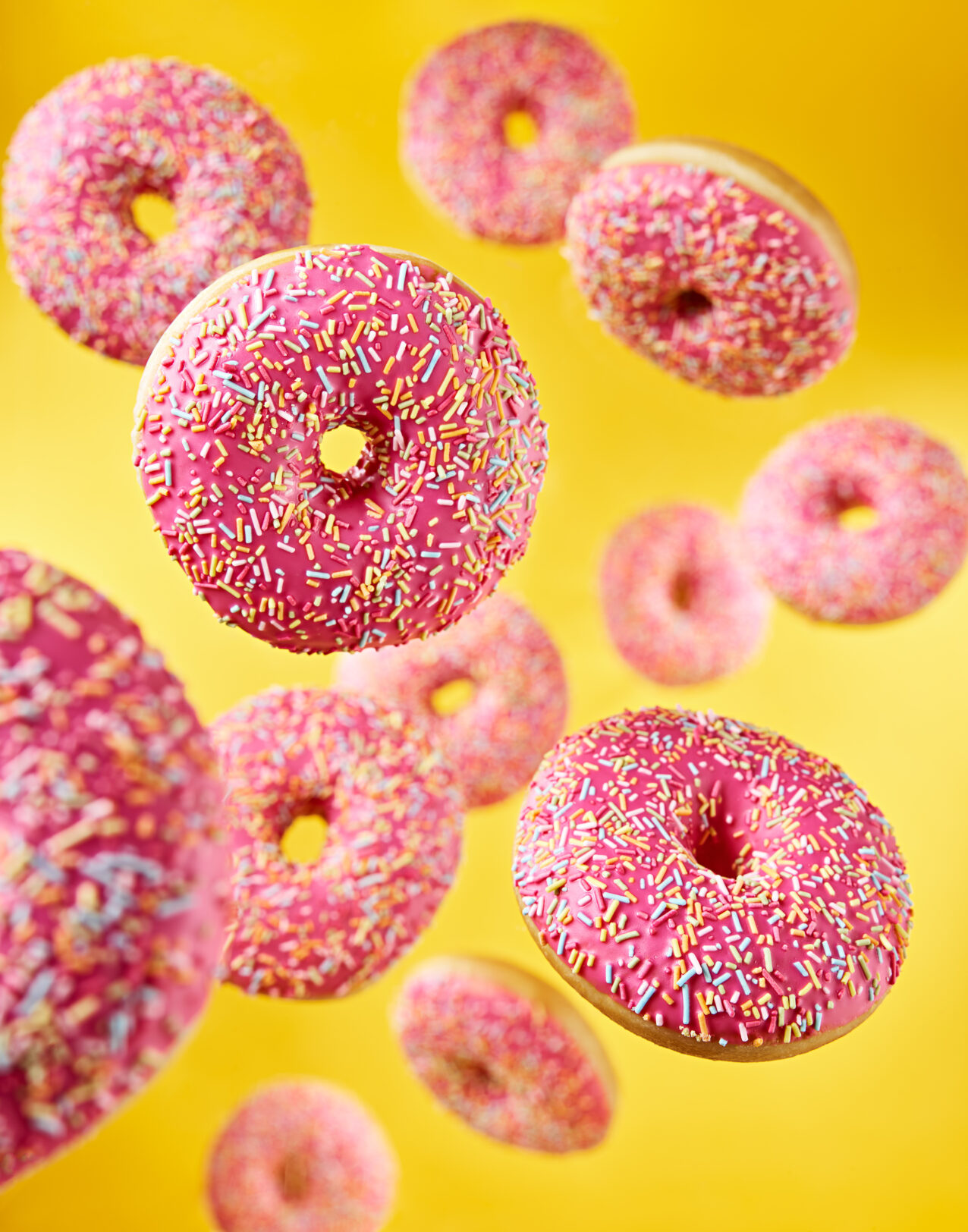
The two subjects with the group of flying donuts are probably solved by most photographers using a setup where the donuts are suspended on wires or strings. However, I decided to turn the setup on its side, so to speak, into a lying setup. In doing so, I used several layers of glass on top of each other for the setup with the yellow background. For the group of floating donuts with a blue background, they were all arranged on one glass plate (for the blurred decorative sprinkles, another glass plate was then held between the donuts and the camera during the shot). The fine-tuning of the height and angle of the donuts, I solved with acrylic cubes, which I have in stock in various sizes.
For both shots, I decided to use a Para as the main light source. Para umbrellas guarantee even illumination, but model details better than a softbox and are simply more brilliant. For the shot with the blue background, I wanted to backlight the right edges to enhance the character floating in space. But since the donuts were placed only about half a meter above the ground, I had no room for a classic striplight. A normal reflector, on the other hand, would not have covered the entire length. The Litepipe P, which I masked to the narrowest strip, was the savior in this case. Even on location, this light shaper is often the only way to "hide" a rather large light source in the room.
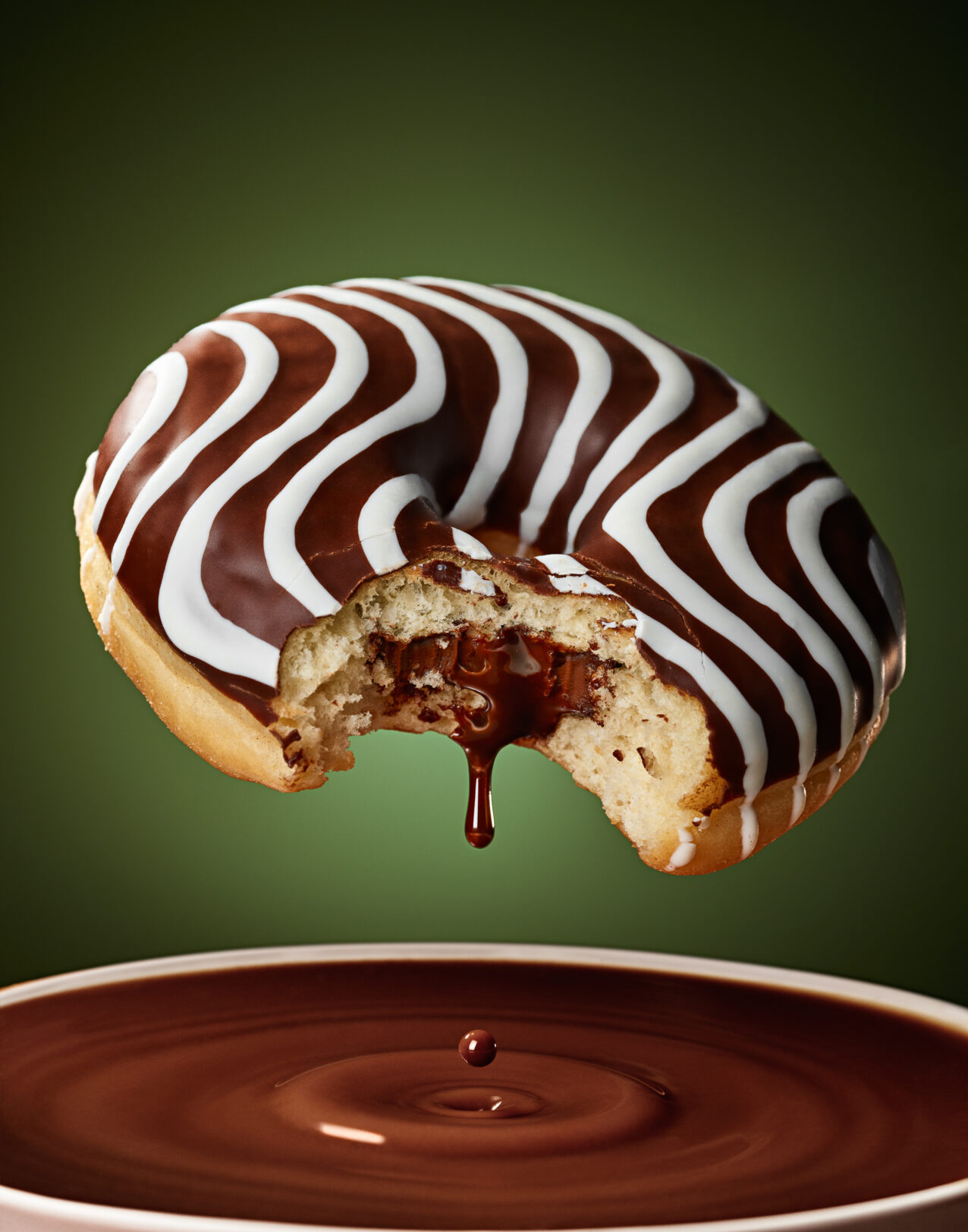
In post-processing, there wasn't much to do with these two subjects. I was able to use these almost out-of-cam. I converted these shots with my Phase One IQ3 with 100 megapixels. I love this camera for still life, because it has an incredibly high detail reproduction.
The other subjects then all fell into the category of liquid and splash... this subject fascinates me a lot and I still have far too little of it in my portfolio. In all of these images, the short burn times of the Broncolor generators were essential. These images were all set up with a similar light setup. A light from above/behind that brings texture and shape to the donut plus a brightening. Here, the Pulso Flooter light shaper, Striplight or a standard reflector were used as the main light, depending on which modeled the donut best for the angle.
Picolites with honeycombs or the Picobox were used for brightening. My image style in still life photography is characterized by high dynamics and brilliant contrasts and colors. Especially with small objects, the Picolite series is indispensable for me here.
The Picobox in particular is a true miracle here. You can get close to the object, which brings a high dynamic into the light, but it is like a huge softbox compared to the object. The Picobox definitely gives a better result than a larger softbox at a correspondingly wider distance.
With the splash shots, some compositing was necessary in post-processing, mostly even from several images. The images usually consist of a dry, clean photographed donut. In addition, the splashes are then mounted. With splash photography, many attempts are usually also necessary until one achieves appealing results. In addition, the donuts lose their shape quite quickly as soon as they get wet.
For the splash motives I decided to use my Canon EOS R5. Also a great camera with many details but just a little faster when triggering, which is more relaxed when photographing the splash images.
www.mattstark.de
Matt's instagram
Matt's facebook
